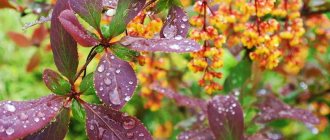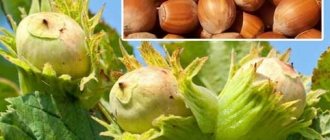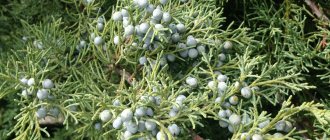Physalis is a perennial relative of tomato and tobacco. In recent years, decorative culture has gained wide popularity among owners of private houses. The amazing fruits growing on the plant will be an excellent decoration for the site during the cold season. In addition, designers use the decorative variety of physalis when creating compositions intended for decorating premises and for landscape design of the site. Below is information regarding what physalis is and what it is needed for.
Description of culture
Inexperienced flower growers often wonder what physalis is and what it is for. Translated from Greek, “Physalis” means “bubble”.
Where does physalis grow? The territory of South and Central America is considered the birthplace of decorative culture. Gradually, physalis berry gained popularity in North America and Europe.
How does physalis grow?
For your information! French men gave decorative physalis flowers to their wives when they wanted to become a father. A bouquet consisting of bright lanterns was considered a bouquet of pregnant women.
What does physalis look like? The ornamental plant is a representative of the Solanaceae genus. There are more than 100 varieties of physalis. The perennial is unpretentious and can withstand severe winter frosts. The culture can propagate by self-sowing.
The height of the bushes reaches 55-170 cm. How physalis blooms is another question that worries gardeners. During flowering, the physalis plant is dotted with light flowers. At the beginning of autumn, bright orange lanterns appear on the bushes, in which small berries are formed. After a certain period of time, Chinese lanterns lose their rich hue. During this period, only fruits and light veins resembling cobwebs can be seen.
Description
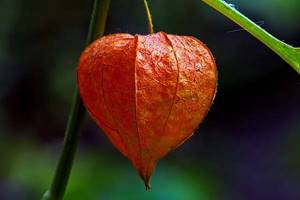
Physalis ornamental Alkekengi
Ornamental physalis is a herbaceous perennial crop belonging to the nightshade family (Solanoideae). The stem can reach 90 cm in length. The leaves are oval, pointed at the ends, and have a dull green color. Blooms in summer. The flowers are white and inexpressive. The decorative appearance is given to the plant by orange swollen bubbles with a diameter of 6 cm with fruits inside that ripen by autumn. Each branch is decorated with 10-15 lanterns. The fruits of ornamental varieties are not suitable for food because they are poisonous.
For decorative purposes, Alkekengi physalis or common physalis (Physalis alkekengi) and Franche physalis (Physalis francheti) are planted. It got its name in honor of the French botanist Adrien Rene Franchet, who first studied this variety of physalis, which came to us from Japan. It began to be planted as an ornamental crop in 1894.
Video “Ornamental and edible physalis”
Physalis decorative in the interior
Vegetable and berry physalis - what does it taste like?
Designers often connect amazing lanterns of decorative physalis with each other using fishing line. The resulting garlands can be decorated with bright ribbons and beaded thread if desired.
A composition of luxurious physalis fruits will ideally decorate a monochromatic interior, creating a bright accent. Designers often use decorative culture when creating door and wall wreaths. The lush outline of the product is complemented by small flowers and foliage. You can also decorate the wreaths with decorative candles and pine branches.
Physalis in cooking
The sweet and juicy fruits of this plant are undeservedly relegated to the background. The main advantage of physalis is its versatility; it is equally good fresh, preserved, or in the form of jam. Vegetable varieties have fairly large fruits with sourness, while berry varieties have a high sugar content and a wide palette of flavors (strawberries, pineapple, grapefruit, melon, etc.).
In the USSR, the plant was cultivated on an industrial scale - the fruits were used to make confectionery products.
What can you prepare from physalis at home? The choice of dishes is simply huge:
- simple and combined salads;
- sweet dishes (jam, jam, marshmallows, candied fruits, compotes, jelly);
- winter preparations (pickled fruits, caviar, assorted dishes);
- sauces (for meat, fish, pancakes);
- seasonings for soups;
- combination stews;
- juices and tinctures.
The fruits can be eaten fresh or after heat treatment. The main condition is that the berries must be of edible varieties and completely ripe.
Jam “Minutka”
The simplest recipe for preparing physalis is Minutka jam. To prepare it you only need 2 ingredients and an hour of free time. To cook Minutka, take the following ingredients:
- 4 cups of fruits;
- 4 cups granulated sugar.

The berries need to be peeled from the outer shells, washed thoroughly and minced in a meat grinder (can be chopped in a blender). Combine the finished mass with sugar, place on low heat and bring to a boil. After boiling, simmer the jam on low for 15 minutes. If the mixture seems too thick, you can periodically add a little water.
Place the finished jam into sterilized jars and store.
Sauce for meat
Sweet and sour sauce made from physalis is ideal for boiled and baked meat. To prepare this dish, take a handful of berries, rinse thoroughly and cut into thin slices (0.2 mm). Additionally, finely chop the onion, garlic and a small piece of ginger.
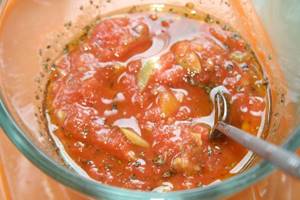
The sauce should be prepared in a well-heated frying pan with a thick bottom. The process is carried out in several stages:
- pour 1 tbsp into a hot frying pan. l vegetable oil, add onion and ginger, fry until golden brown;
- add physalis to fried foods, 1 tbsp. l sugar, salt to taste and cover tightly with a lid.
After evaporating the juice, mix the mass thoroughly, add 10-15 cumin seeds, ½ red pepper, 2 crushed garlic cloves. Add 150 ml of water, put on low heat and evaporate until fully cooked.
You can prepare the sauce for future use by placing it hot in sterilized jars and sealing tightly.
Useful and dangerous properties of physalis
The decorative physalis fruits that form on the bushes contain a large percentage of useful elements, namely:
- vitamin A;
- potassium;
- magnesium;
- sodium;
- vitamins B and C.
Incarvillea delavayi - growing from seeds
The listed elements can help replenish the deficiency of microelements in the body.
Important! Despite the abundance of useful elements, the berries cannot be eaten, as they contain physaline, which is a toxic substance.
The bitter taste of the fruit can cause poisoning and severe vomiting. You can only eat physalis vegetables and annual or perennial fruit varieties.

Physalis berries
Types and varieties of physalis for flower beds
To decorate a flower bed near your home, you should pay attention to such varieties of decorative physalis as:
Physalis peruviana
Lemon balm - growing from seeds in the country
This is a perennial whose herbaceous shoots reach 95-160 cm. The shoots are dotted with pubescent foliage, which is naturally heart-shaped. The length of the serrated leaf plates reaches 6-14 cm, the width is in the range of 5-10 cm. During flowering, flowers open on the plant with yellow petals and spots at the base, painted in a dark purple palette. Gradually, berries form in place of the physalis flowers. Thin yellow-brown bracts hide the fruits, whose diameter is 12-18 mm. Sweet and sour berries are endowed with an amazing fruity aroma.
Among the best varieties of Peruvian physalis are:
- pineapple - a variety whose berries ripen at the end of summer, they are endowed with a pronounced pineapple aroma;
- strawberry - a type of perennial, the height of the bushes barely reaches 65 cm. Amber berries exude a strawberry aroma;
- dessert look. Its height reaches 70 cm. There is a small amount of foliage on the bushes, so the bright orange fruits are clearly visible on the plants;
- marmalade variety. The main difference is the presence of branched bushes. Their height can reach 140-150 cm. Physalis berries, which weigh more than 45 g, are colored lilac-yellow.
Physalis vulgaris
It is also a perennial with herbaceous shoots, the height of which is in the range of 45-55 cm. The foliage is ovoid in shape. On each leaf blade you can find swelling between the veins. The width of the foliage is in the range of 5-9 cm, and the length does not exceed 7-12 cm. Physalis flowers, painted in white tones, resemble the shape of a bell. The round berries are hidden under an inflated filmy lantern. Looking at the berries in cross-section, one can note their incredible juiciness.
Note! Eating unripe fruits can lead to poisoning. Edible berries can be used in the preparation of medicinal decoctions.
Physalis decorative
And this is also a perennial crop, the fruits of which, despite their special elegance, are strictly forbidden to eat. Containing toxic substances provoke poisoning and severe vomiting. You can admire the brightly colored lanterns at the end of summer. The most popular variety of decorative physalis is the Franchet variety, whose branched shrubs can reach a height of 85-90 cm. The dark green foliage is naturally endowed with oval outlines. The teardrop-shaped fruits are painted in a scarlet palette.
Nuances of crop care
Caring for Physalis berry is much easier than caring for other Solanaceae. For example, unlike tomatoes, the crop does not need to remove stepsons. On the contrary, this procedure is even harmful for her, because the fruits are formed precisely in the forks of the shoots. Therefore, all crop care comes down to weeding the bed, loosening it, watering and fertilizing.
The plant is quite tolerant of heat and drought, but until the beginning of August it is advisable to water the physalis frequently and abundantly. If it's not too warm outside - twice a week. In hot weather, the intervals between procedures are reduced to 1–2 days. The best time for watering is in the evening after sunset. Water is poured directly under the roots or into the annular grooves around the base of the stem. If technically possible, drip irrigation will be organized. Sprinkling and irrigation from a watering can or hose are contraindicated for the crop.
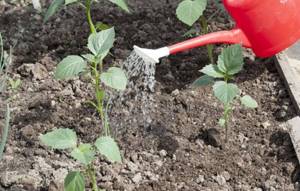
Physalis should be watered so that drops of water do not fall on the leaves, flowers and fruits.
The plant then makes do with natural precipitation. This is necessary so that the fruits gain their inherent juiciness, acquire a characteristic taste and do not crack.
The yield of physalis is quite high for such a compact plant, so during the growing season the plant needs feeding. Nutrients must be added at the beginning of flowering, and then twice more with an interval of 20–25 days. The preferred method is root feeding. The consumption rate is at least 0.5 liters of nutrient solution per plant.

Fertilizer for Solanaceae is also suitable for physalis, but the plant also reacts positively to organic matter
Physalis berry reacts positively both to complex store-bought preparations (universal or intended specifically for Solanaceae) and to natural organics. The most common top dressings are infusions of nettle leaves, dandelion, and wood ash. In the first half of the season, you can use fresh bird droppings or cow manure, which provides plants with nitrogen, also in the form of an infusion. It is useful to periodically scatter the ash over the bed and during the loosening process. It provides ripening fruits with the potassium and phosphorus they need.

Nettle infusion is a completely natural and absolutely free fertilizer.
Video: tips for caring for physalis
Physalis suffers from diseases extremely rarely. The same can be said about pest attacks. If infection does occur, it is irrational to treat the plant. You just need to pull it out of the garden bed and burn it, and disinfect the soil by spilling a 5% solution of copper sulfate or dark crimson potassium permanganate.
The greatest harm to Physalis berry can be caused by mole crickets, wireworms and slugs. The first two pests gnaw at the roots of the plant, the last one feeds on the greenery, eating large holes in the leaves. Their massive invasions are an anomaly that occurs extremely rarely, so in order to protect plantings, preventive measures are quite sufficient.
Photo gallery: what pests dangerous to physalis look like
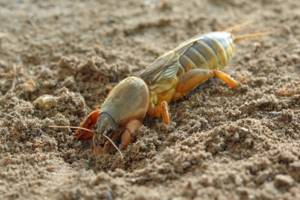
The mole cricket chews through the roots of plants, the above-ground part dries out and dies
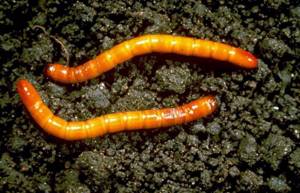
Every gardener has probably seen the wireworm (also known as the larva of the click beetle).

Slugs feed on the greenery of a wide variety of plants; they can completely destroy young shoots
When planting, place a little onion peel into the holes. Several deep containers are dug into the soil, filling them with beer, kvass, pieces of cabbage (for slugs), chopped potatoes or carrots (for wireworms) or millet porridge mixed with any vegetable oil (for mole crickets). Crushed chalk, wood ash, sand are added to the bases of the stems, and they are embedded in the soil during the loosening process. Onions, garlic, spicy herbs, and flowers with a strong aroma are planted nearby.
The growth of the physalis bush continues until the first frost. Accordingly, fruiting is extended. You can determine that the berries are ripe by the shade of the skin characteristic of this variety, the increased aroma, and also by the fact that the fruits begin to crumble. To increase yield, in the first ten days of September it is recommended to pinch the tops of the shoots. Then more nutrients will be sent to the fruits.
A dry, sunny day is chosen for harvesting. Cut fruits intended for eating are immediately peeled. It contains an alkaloid glycoside and can impart an unpleasant bitterness to ripe berries.

Physalis intended for food must be peeled immediately
If the physalis did not have time to ripen before the first frost, the bushes are dug up and transferred to a warm place. Its fruits have the ability to ripen, just like tomatoes. But it takes much longer, 3–4 months. Ripe fruits will fall to the floor on their own.
Most varieties of physalis berry are not stored for long, a maximum of a month or two. Keep them in a dry, dark room at a temperature of 4–6ºС, without removing the “flashlight” shell. Only slightly unripe fruits that were collected before the first frost are suitable for storage.
Video: harvesting and storing physalis harvest
Growing decorative physalis from seeds
How to grow physalis from seeds at home? Experts recommend sowing them for seedlings at the end of March. Below is a step-by-step process for growing seeds that will help you avoid common mistakes.
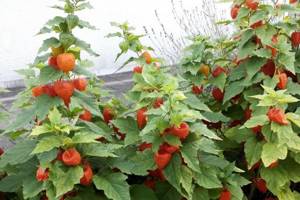
Decorative culture
- The soil mixture is sterilized in the oven for about 30 minutes.
- After cooling, the soil is poured into containers.
- Physalis seeds are laid out on top of the layer of soil, after which they can be sprinkled with a layer of soil. The depth should not exceed 10 mm.
- The soil is moistened with a spray bottle.
- The containers are covered with film material and transferred to a room where the temperature is between 17–20 ºС.
- After 10 days you can expect the first shoots to appear. During this period, the film can be removed.
- Pots with seedlings are transferred to a well-lit area.
- As soon as 2-3 leaves appear on the seedlings, it is worth picking up the seedlings into separate containers, which will contribute to the active development of the root system.
- Every 2-3 weeks it is necessary to apply complex mineral fertilizer to the soil. The most effective fertilizing is Agricole, which must first be diluted with a small amount of water according to the instructions.
Note! At the beginning of June, you can plant seedlings in the garden bed.
Planting seedlings in open ground
How to grow physalis? In mid-May, experts recommend preparing the site for planting grown seedlings. Below is a step-by-step process for planting seedlings in an open bed.
- The soil in the selected area is dug up to a depth of 35-40 cm.
- A small amount of ash and humus is added to the ground. If desired, you can sprinkle a little chopped onion peel, which can repel pests.
- Seedlings planted in open ground should have 5-7 leaves.
- Planting work is best done after sunset in early summer. Seedlings are planted in pre-dug holes, on the root system of which a lump of earth should remain.
- The soil, after the seedlings are planted, is abundantly moistened. The soil around the flowers is mulched. Sawdust or straw are ideal as mulch. The thickness of the mulch layer should be within 5-7 cm. Mulching will get rid of weeds and retain moisture in the soil for a long time.
Important! It is unacceptable to use fresh manure as top dressing.
Physalis can not only get sick, but also die from such fertilizer.
Known plant varieties
Many manufacturers of planting material get confused, giving the same species different names.
Physalis Franchet
This is a Japanese variety that feels great and adapts to the Russian climate. It has oval-shaped leaves, angular stems and creeping roots. After Physalis Franchet fades, its capsule grows and becomes red-orange. The plant becomes so bright from the end of summer and lasts until frost. Each box contains a medium-sized black leathery berry, no larger than a cherry. This variety easily tolerates wintering; the bush grows back every spring. It can grow in any soil, but feels best in calcareous soil.
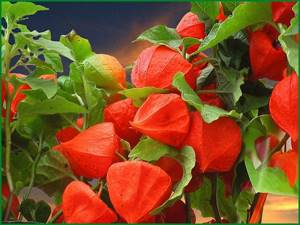
Physalis Orange Lantern
The orange lantern is a decorative variety of the crop. Planting material is produced. It is similar in characteristics to Physalis Franchet, but has a more orange box and is an annual plant.

Physalis Confectioner
This variety is one of the most popular and oldest in our country. Usually it was grown in industrial quantities; the taste of the fruit is not very pleasant. The main qualities of Physalis Confectioner: frost resistance, rapid ripening. Its bushes are productive, the fruits can be collected not only by hand, but also by machine assembly. The fruits are often used in cooking, especially for the confectionery industry due to their high pectin content. With their addition, jam and jam are prepared. Fresh berries are not very tasty. They ripen quickly. Physalis bushes Confectioner reach 80 centimeters. Planting material has good germination.
Popular: The best varieties, growing rules, care for broccoli
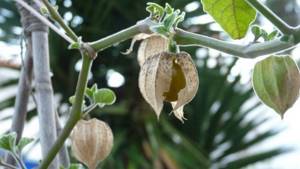
Physalis marmalade
This is one of the new plant varieties, registered only about ten years ago. After planting, it matures in 120-130 days. The bush does not need to be pinched, it is not tall. It is convenient to collect fruits from such a plant. The gardener can plant Physalis Marmalade in a shaded area. This factor does not affect its productivity. During the season, you can collect up to one and a half kilograms of small fruits weighing about 30-40 grams from the bush. Some companies produce seeds with a picture of purple fruit. This is not true. This type of culture is good for preservation; it is pickled. Add to jam and marmalade.

Physalis Jam
Its properties are similar to Marmalade, but the Jam physalis bush is taller and has large leaves. The bush blooms with orange flowers. After ripening, the fruits are recommended to be used for preservation and pickling.
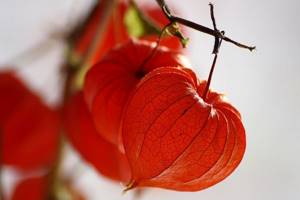
Physalis Plum Jam
This variety differs from many other plant varieties in its unusual shade of lilac-violet tone. If you cut the berry, the gardener will see green pulp inside.
There is a similar variety of plant called "Tomatillo", which, in addition to the purple skin of the fruit, has the same color of pulp. In order for Plum Physalis to have a more saturated shade of fruit, experienced gardeners recommend choosing a sunny place for it. Its bushes stretch up to two meters, and the variety’s yield is average.
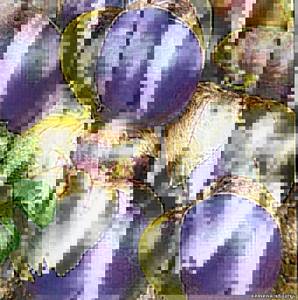
Physalis wren
This variety was bred in the 90s of the 20th century and is considered one of the most productive crops. The berries on the plant reach 90 grams, and up to five kilograms can be collected from one bush. Gardeners value it for its taste and rapid ripening. The first fruits can be harvested on the 90th day after planting. Ripe berries have a yellow tint and contain a lot of pectin.

Physalis florida Philanthropist
This species is one of the newest crop varieties bred by breeders. Philanthropist is a berry variety, but outwardly the bush is similar to the vegetable variety of physalis. The plant stretches up to 30-50 centimeters. Depending on the place of growth (greenhouse, open ground). The fruits ripen 120 days after planting. The plant looks impressive thanks to its interesting purple hue. Philanthropist has small yellow berries with bluish splashes. The advantage of the variety: ovaries are formed even at low temperatures.
The taste of its fruits is pleasant, the berries have no sourness or odor. They look like cherries. When it rains, the berries may burst. If there is no damage, the harvested crop is stored for up to 45 days after harvest.

Physalis Gold placer
This species belongs to the raisin varieties. Its bush stretches up to 35 centimeters, the fruits ripen early. The yield of the Gold Placer is small. Typically, a gardener receives about 500 grams of yellow fruits from one plant. The taste of the berries resembles something between pineapple and strawberries.
Popular: A wide variety of radishes: varieties and types of vegetables
Physalis Dessert
This is another type of crop related to raisin varieties of the plant. It easily overcomes negative weather and can be grown in central Russia. This is a plant with a straight trunk, stretching up to 70 centimeters. The small fruits reach seven grams and have an orange tint. The berries can be eaten fresh or used for canning.
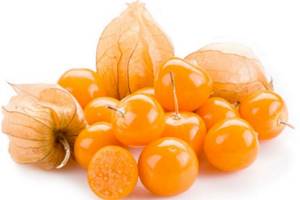
Physalis Bluebell
This is a berry variety with relatively large fruits, reaching ten grams. They are orange in color. The plant itself is semi-creeping, but stretches almost up to a meter. You can collect up to one and a half kilograms of fruit from one bush.
Physalis Turkish Delight
Turkish delight is considered a universal and popular variety among gardeners and gardeners. This physalis is characterized by frost resistance and early ripening (95 days after planting). Turkish delight has compact bushes with large fruits. The berries are recommended to be eaten fresh and used for making jam, preserves or making dried fruits. The plant is resistant to late blight and Colorado potato beetles.
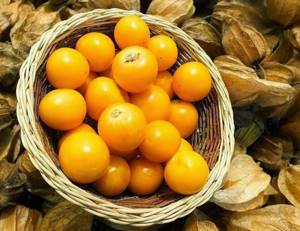
Physalis Raisin
The second name of this variety among. This type is universal and popular. Its bush is low with small berries weighing from three to six grams.
For seed germination, a temperature of 22 to 24 degrees is required. It is planted in open ground only after frost has passed. You can grow it in greenhouses. The plant prefers abundant watering and can grow in any soil.
With uneven watering there is a risk of fruit cracking. After harvesting, the berries are stored for up to six months. Raisin fruits have an excellent taste. They look like pineapple, and the juice squeezed from the berries resembles tangerine juice.

Physalis peruviana
This is a unique type of physalis, which belongs to the berry crop species. The Peruvian variety grows in its natural environment as a perennial. In our climate, it cannot overwinter and freezes out, so it is grown in gardens as an annual plant. It can be moved to the winter garden for the winter, and planted again in the garden in the spring.
You can grow Peruvian physalis from seeds, but it takes a long time to ripen (up to 150 days). Therefore, gardeners recommend planting seedlings in February, otherwise the berries simply will not ripen. The bushes can grow up to two meters; they love warmth and light. In regions with cold climates, this variety should be grown in greenhouses. The bush should be pinched. In July and August, the plants are fed and watering is stopped so that the bush does not go into leaves. The ripening of the berry inside the box can be understood by its color change. Ripe fruits have an orange tint. The berries do not fall off after ripening. They stick tightly to the plant and even have to be cut off.
Currently reading:
- Choosing cucumbers for open ground according to your preferences
- Varieties, planting and care of perennial rudbeckia
- Beautiful flowering of epiphyllum after planting in a pot
- Decorating gardens with ornamental cabbage after planting
Share the news on social networks
About the author: Lyudmila Vasilievna Nosikova
Agronomist of the state agricultural enterprise "Garovskoe" of the Khabarovsk region of the Khabarovsk Territory.
Reproduction
To propagate a perennial crop, you can use the following method:
- dividing the bush;
- cuttings.
Rhizome division
The method of dividing the bush is the most popular propagation method. The perennial root system is able to adapt well to a new location. The procedure is recommended to be carried out in mid-April. Having dug up an adult plant, you need to cut it into a couple of parts, at each end of which growth points should remain. The resulting bushes are transplanted to new places.
Cuttings
It is best to harvest cuttings in July. To do this, you need to cut the tops of the shoots, on which 2-3 buds are located. Cuttings are planted in moist soil. It is best to bury them half their length. Containers with plantings are covered with polyethylene material (with holes for ventilation). As soon as the cuttings take root, the polyethylene can be removed. A couple of weeks after rooting, you should begin transplanting the seedlings into open ground.
Care
Care includes the following standard procedures:
- watering,
- weeding,
- loosening,
- feeding
Decorative physalis is quite resistant to drought. It should only be watered during periods of prolonged dry weather.
All physalis, including decorative varieties, do not like to be adjacent to weeds. At least once every 1-1.5 months it is necessary to weed and loosen the soil. You don't have to do weeding if you use mulching.
It is optimal to fertilize the crop twice a year:
- in the first stages of development, when the plant begins to grow rapidly. Feed with humus, compost or wood ash, or complex mineral fertilizer;
- the second feeding is carried out as soon as the physalis blooms using similar means.
To ensure that the branches of physalis remain straight for subsequent use for decorative purposes, tying is necessary.
In the last days of August, in order for the “bubbles” to ripen before the onset of cold weather, the tops of the plant are pinched.
Rejuvenation
Physalis needs to be rejuvenated quite often, as it grows quickly and spreads to neighbors in the garden. Therefore, at intervals of 5-7 years, the bushes are rejuvenated by dividing and moving to a new location.
Video “Planting decorative physalis”
Features of caring for physalis in open ground
Decorative physalis needs good lighting, so when selecting an area for planting, it is important to take this fact into account. The area must be protected from drafts. For this purpose, you can use a shading garden net.
It is worth giving preference to areas on a hill, which will avoid contact of nearby groundwater with the root system. It is desirable that the soil is slightly alkaline or neutral.
Note! Experienced flower growers recommend giving preference to the checkerboard method when planting; the distance between the bushes should reach 45 cm. This will make the plantings neater.
Below are the most important rules for caring for perennials, the observance of which will allow you to grow healthy bushes.
- The recommended frequency of watering is 3 times a week. On particularly hot summer days, it is recommended to moisten the soil every day.
- Every week you should weed out the weeds growing near the physalis. When watering plants, it is necessary to systematically loosen the soil.
- It is recommended to fertilize once every 14-15 days. For this purpose, you can use mullein diluted in a small amount of water.
- The plant does not need pruning. Fruits appear on more branches.
By properly caring for plants, you can grow bushes healthy and not susceptible to diseases.
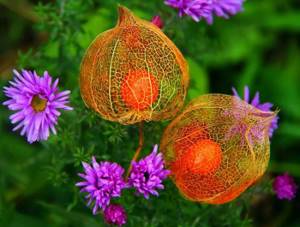
Fruits of an ornamental plant
Planting physalis and necessary preparatory procedures
Physalis is a real find for lazy gardeners. It requires minimal care. Nevertheless, certain efforts still need to be made to create optimal or close to optimal conditions for the culture. Without this, abundant fruiting is impossible.
Physalis does not make excessive demands on the quality of the soil. It is quite suitable for both heavy clay and light sandy soil. The only thing it categorically does not tolerate is acidified or saline substrate. And if the first can still be corrected by adding dolomite flour, eggshells crushed to a powder or wood ash into the soil, then in the second case you will have to look for another site. It is desirable that the soil is loose. In heavy soil, it is better to add a little sand first.

Dolomite flour is a natural soil deoxidizer that does not have any side effects if the dosage is observed.
The plant tolerates both bright sunlight and shade, but in the first case the ripening of the fruit is delayed, because it is a short-day crop. Therefore, you don’t even have to have a separate bed for physalis, planting it under fruit trees, between bushes, near a fence, and so on.

Physalis can be planted in an area that is not suitable for other garden crops; the requirements for the plant are minimal
Practice shows that you only need to plant physalis in the chosen place once. The plant is an annual, but reproduces well by self-sowing. You just need to let a few fruits ripen and fall to the ground. The frost resistance of the seeds allows them to successfully withstand even the harsh Ural and Siberian winters. But it’s still better to play it safe and cover the bed with fallen leaves, straw, and snow on top in late autumn.
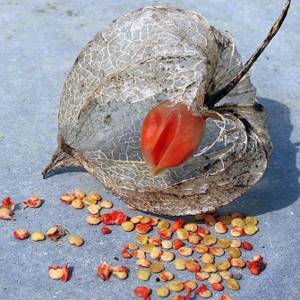
Physalis berry reproduces well by self-sowing; you need to let several fruits ripen and dry on the bush
It is undesirable to cultivate physalis where other nightshades (tomatoes, potatoes, eggplants) used to grow. In principle, he is not susceptible to disease, but in this case the risk increases. Any other garden crops are suitable as predecessors, especially pumpkin, legumes and all types of cabbage.

Tomatoes, like other nightshades, are bad predecessors for physalis
The selected area is dug up and cleared of weeds. This can be done both in autumn and spring. If previously something was grown here and, accordingly, fertilizers were applied, now you can do without them. Otherwise, humus or rotted compost is required (about 5 liters per linear meter). A useful additive is sifted wood ash. Fresh manure is strictly excluded - it will simply burn the roots and the plant will die.
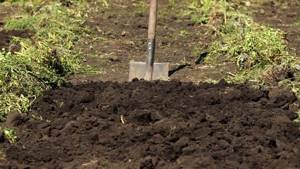
It is enough to dig a bed for Physalis berry to a depth of one shovel bayonet
Growing physalis without seedlings in Russia is practiced mainly in the southern regions with a warm subtropical climate. In such conditions, the gardener can be sure that they will have time to ripen. In the Urals, Siberia, and other areas, summer can last much less than the required hundred days. Although, of course, no one forbids taking risks.

Humus is a natural remedy for increasing soil fertility
Seeds are planted in the ground from the first half of April to the 20th of May. By this time the air should warm up to 15ºС, and the soil at a depth of 8–10 cm should warm up to at least 7ºС. They are sown in furrows about 5 cm deep, maintaining an interval of 7–10 cm between them. This is quite difficult, the seeds are small, so it is better to pre-mix them with sand. The row spacing is approximately 30 cm. Do not deepen them too much, a maximum of 1.5 cm. Before the emergence of seedlings, the beds are covered with film. When the plants form two true leaves, thinning is carried out, leaving at least 25 cm between adjacent specimens. There should be no more than ten seedlings per 1 m². Those that thicken the plantings can be moved to any other place. They will most likely take root successfully and will also produce a harvest, but only 7–10 days later.
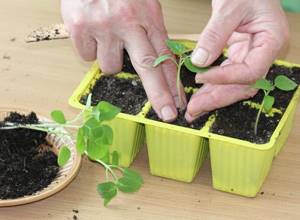
Physalis seeds are small, so seedlings need to be picked, and seedlings in the garden need thinning
Growing physalis in seedlings allows you to get berries faster. Practice also shows that in this case the yield increases due to the extended fruiting period.
Seeds can be purchased or collected yourself. Several ripe large fruits are peeled, the pulp is ground into a paste and allowed to dry. It will soften more if you first hold the fruits, cut in half, in water for several hours. When the pulp turns into dust, it is sifted, removing the planting material.

Each Physalis fruit contains many seeds, so problems with planting material, as a rule, do not arise
There is another way. Before the first frost, the physalis bush is dug up from the garden bed, transferred to a warm room and hung with soft cloth underneath it. As they ripen, the seeds will fall to the floor on their own. But in this case, the process will drag on for several months.
Before planting, the seeds are immersed in a salt solution for several minutes. This allows you to discard those that definitely will not sprout - they float to the surface. Those remaining at the bottom are washed and dried. To disinfect and disinfect them, they are pickled in a biofungicide solution for a quarter of an hour or kept in water with the addition of several crystals of potassium permanganate (until a bright pink color) for 6–8 hours. After this, they will also need to be washed in running water and dried.
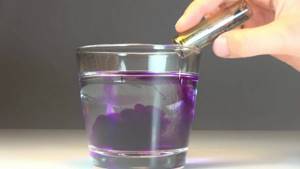
Potassium permanganate solution is one of the most famous disinfectants
Physalis berry seeds are sown for seedlings in mid-April. The seedlings will be ready for transplanting to a permanent location in the second ten days of May. By this time, they should reach a height of 10–12 cm. The interval between the bushes is 40–45 cm, the row spacing is 70–80 cm. The procedure is carried out approximately 1.5 weeks earlier than planting the tomatoes.
Recent Entries
5 working ways to use tar in the garden 7 indoor plants that help you get married even in adulthood Indoor plants that can bloom in trouble

Physalis seedlings develop quickly enough, so there is no need to plant seeds too early.
It is best to purchase special soil for growing Solanaceae, although a universal substrate for seedlings or just garden soil will do. Any soil must be sterilized. To do this, it is fried in the oven, frozen in the freezer, or simply placed on the balcony for several days in winter. The easiest way is to spill the soil with boiling water or a dark purple solution of potassium permanganate.
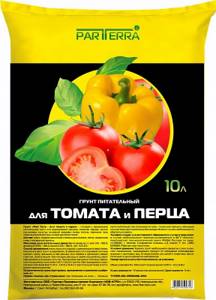
Soil for Solanaceae is also suitable for Physalis berry, but you can use any other substrate
The procedure for growing seedlings is not particularly difficult:
- The prepared substrate is poured into plastic cups, peat pots, and other small containers. It needs to be watered moderately and leveled. 2-3 seeds are sown in each container. Then they are covered with film or glass. The optimal temperature now is about 25ºС. Light is not needed at this stage yet. The “greenhouse” is ventilated daily, preventing condensation from accumulating. You can plant physalis in common containers, but then you will have to tinker with picking. Also, the experience of growing the crop shows that in this case the percentage of weak and deformed seedlings increases.
- You will have to wait 6–10 days for the emergence of seedlings. After this, the cover is removed. The temperature is slightly reduced to 20–22ºС. Daylight hours are required, lasting 8–10 hours. Otherwise, the seedlings stretch out unsightly and lag behind in development. If there is not enough natural light, use phytolamps. Ordinary fluorescent and LED lights are just as suitable.
- Further care of Physalis berry seedlings comes down to periodic watering as the soil dries. 2-3 times a week is enough. After about 15–20 days, the plants will need to be fed. They use either a weak solution of nitrogen-containing fertilizers (2–3 g per liter of water) or purchased complex fertilizers designed specifically for seedlings. When more than one seed germinates in a pot, in the phase of the second true leaf, the “extra” specimens will need to be transplanted into another container or simply thrown away if the planting material is not in short supply.
- About a week and a half before planting in the ground, hardening begins. It should be warmer outside, 8–10ºС. Pots with seedlings are taken outside every day for several hours, gradually extending the time spent in the open air. In the last 2-3 days, you can even leave them to spend the night outside the house.
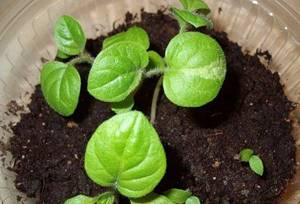
Physalis seeds germinate quickly and en masse
Video: planting physalis seeds for seedlings
It is advisable to transfer Physalis berry seedlings into open ground in the evening and immediately stretch a canopy made of any white covering material over the bed. This will protect the tender leaves from sunburn and the plants will take root faster. The cover can be removed after about a week.

To make it easier to remove plants from containers, about half an hour before planting, physalis should be watered generously.
Unlike most garden crops, newly planted physalis does not need watering. It is enough to moisten the soil in the hole before planting and water the seedlings in the pot well to make it easier to remove them from the container. A handful of humus is placed at the bottom of the hole. Plants are buried down to the first true leaf.
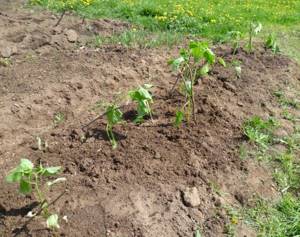
At first, physalis planted in the ground must be protected from direct sunlight, otherwise the plants may get burned.




